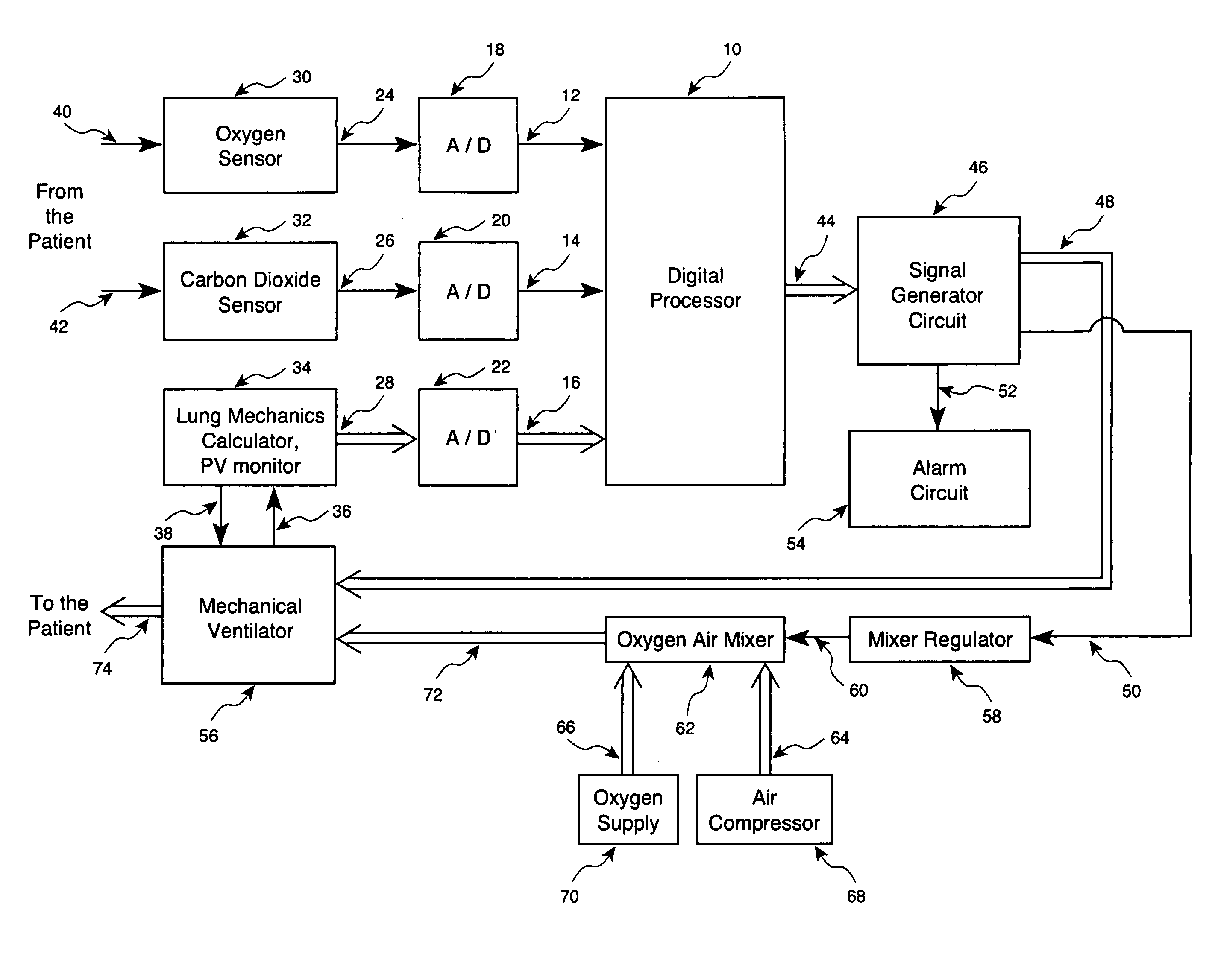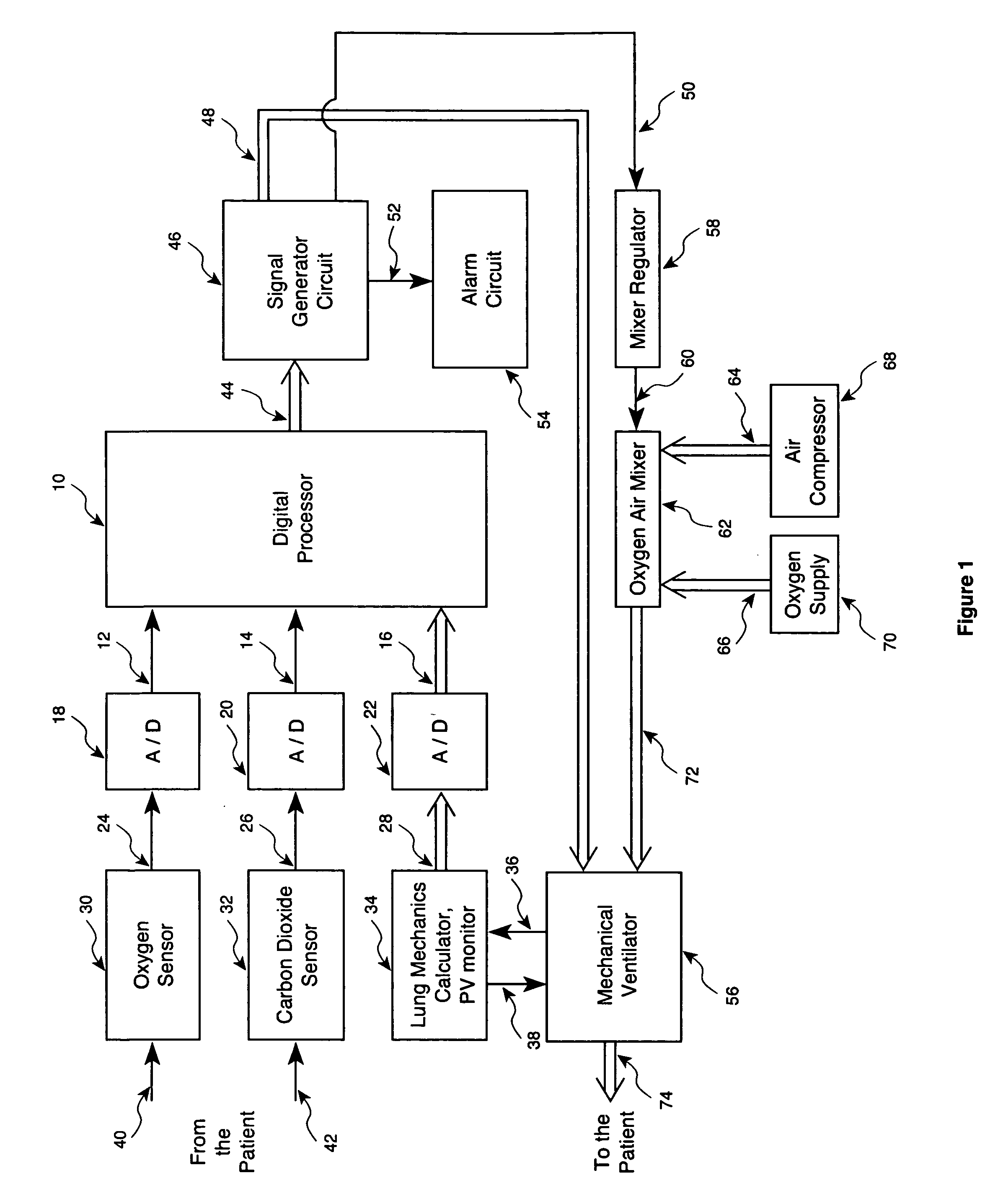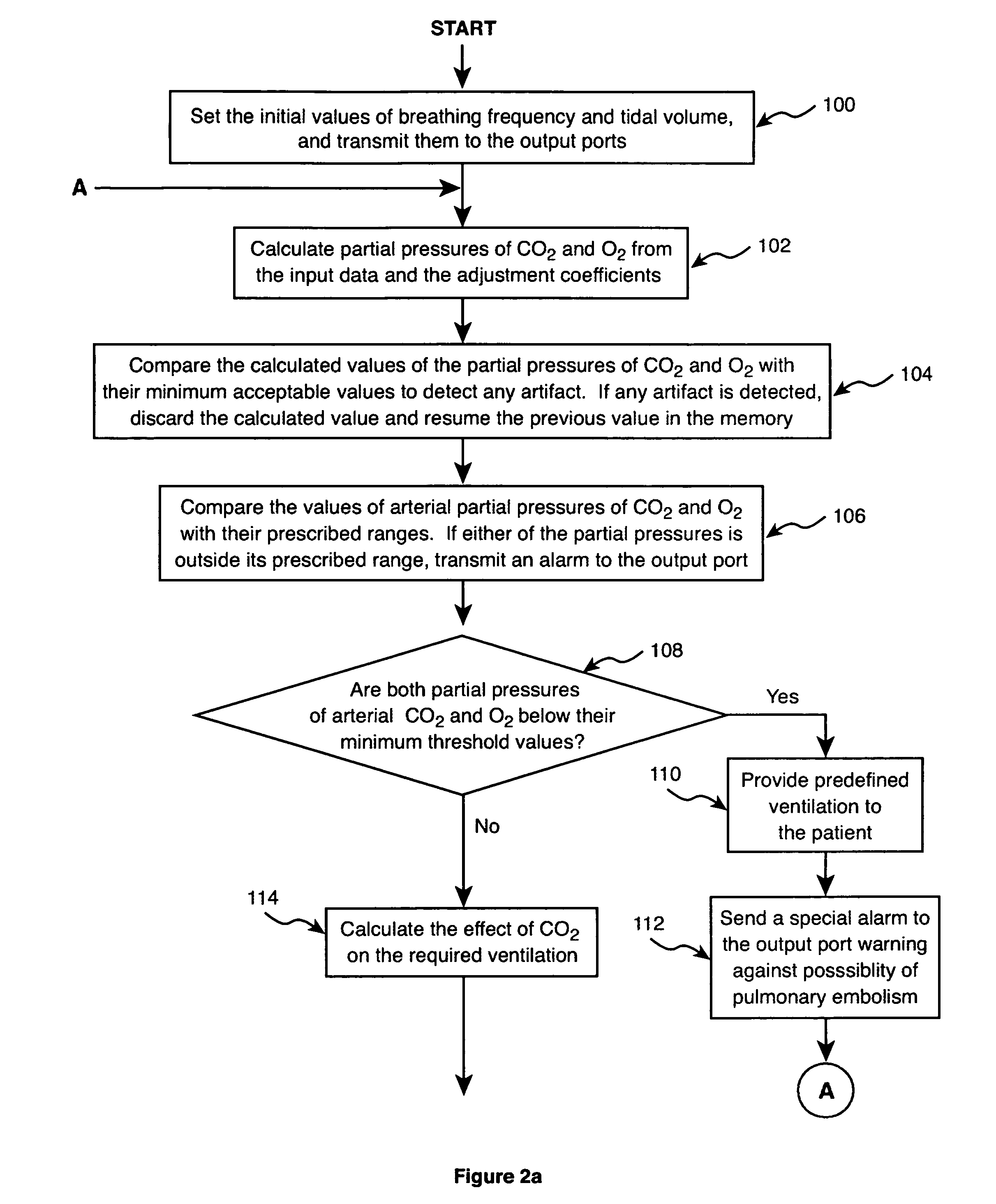Method and apparatus for controlling a ventilator
a ventilator and control method technology, applied in the direction of valve operating means/release devices, process and machine control, instruments, etc., can solve the problems of not providing the automation of all factors, complicated adjustment, and particularly cumbersome adjustments in more fragile and less medically stable patients
- Summary
- Abstract
- Description
- Claims
- Application Information
AI Technical Summary
Benefits of technology
Problems solved by technology
Method used
Image
Examples
Embodiment Construction
Definitions
[0018] In the specification and claims:
[0019] 1—The term “ventilator” refers to a device which is used to provide total or assist ventilatory treatment to patients, and includes mechanical ventilators (i.e. artificial respirators) or CPAP (Continuous Positive Airway Pressure) machines.
[0020] 2—The term “PEEP” represents “Positive End-Expiratory Pressure” and is interchangeable with the term “CPAP,” which represents “Continuous Positive Airway Pressure,” for example, when assist ventilation is provided to spontaneously breathing subjects.
[0021] 3—The term “FIO2” represents “concentration of oxygen in a patient's inspiratory gas” which is the same as “fraction of inspired oxygen.”
[0022] 4—The term I:E represents the “ratio of inspiration time to expiration time.”
DESCRIPTION OF PREFERRED EMBODIMENTS
[0023]FIG. 1 shows a block diagram according to an alternative practice of the present invention. The digital processor 10 includes a programmable controller coupled to rece...
PUM
 Login to View More
Login to View More Abstract
Description
Claims
Application Information
 Login to View More
Login to View More - R&D
- Intellectual Property
- Life Sciences
- Materials
- Tech Scout
- Unparalleled Data Quality
- Higher Quality Content
- 60% Fewer Hallucinations
Browse by: Latest US Patents, China's latest patents, Technical Efficacy Thesaurus, Application Domain, Technology Topic, Popular Technical Reports.
© 2025 PatSnap. All rights reserved.Legal|Privacy policy|Modern Slavery Act Transparency Statement|Sitemap|About US| Contact US: help@patsnap.com



